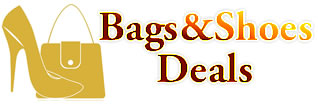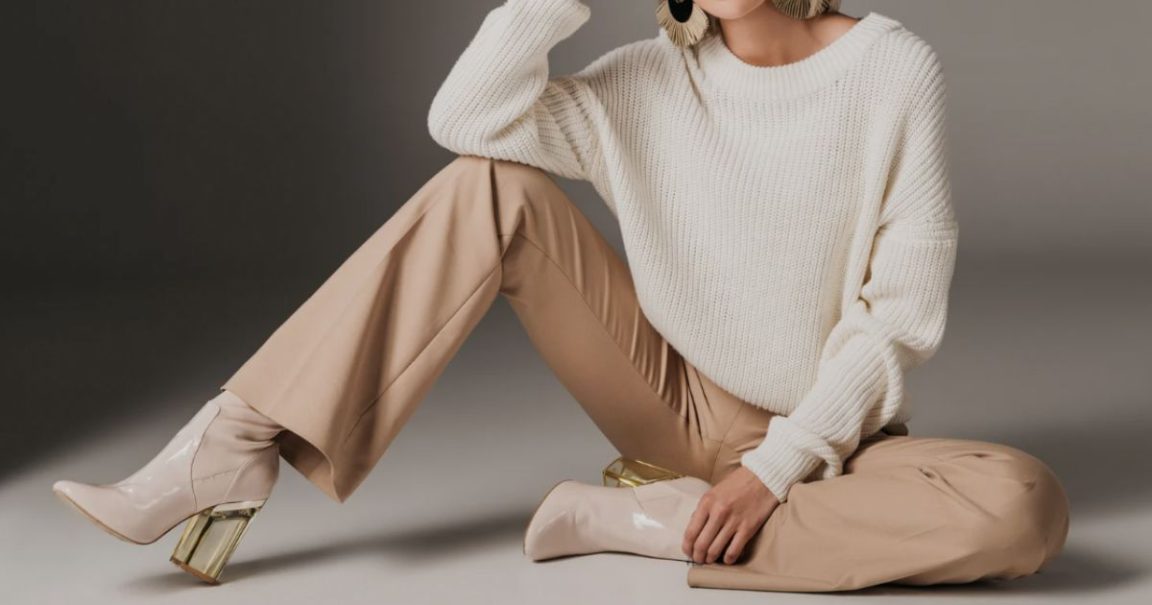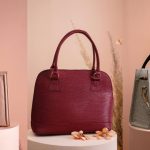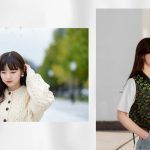Accessorizing is where fashion truly comes alive. While clothing provides the canvas, accessories are the brushstrokes that define personality, attitude, and flair. Fashion editors, the tastemakers behind the pages of top magazines, understand this intuitively. They don’t just follow trends; they set them. If you’ve ever wondered how even the simplest outfit can look editorial-ready, it’s all in the accessories. Here’s a detailed guide to help you accessorize like a fashion editor and elevate every outfit.
1. Understand the Role of Accessories
Accessories are not mere afterthoughts. They are the statement, the punctuation, and often the focal point of an outfit. Fashion editors think of accessories in three ways:
- Statement Pieces: Bold and eye-catching items like oversized earrings, a chunky chain necklace, or a sculptural handbag. These command attention and transform basic outfits into style moments.
- Complementary Details: Items that enhance an outfit subtly, such as a sleek belt, a classic watch, or a pair of minimalist heels. They tie together colors, textures, and proportions.
- Practical Elegance: Accessories that combine function and style, such as chic sunglasses, a versatile tote, or a silk scarf. Fashion editors know that practicality need not compromise aesthetics.
Understanding these categories allows you to mix and layer pieces like a pro without overwhelming the look.
2. Build a Thoughtful Accessory Wardrobe
Fashion editors don’t rely on a random assortment of accessories—they curate. Here’s how to build your collection:
- Invest in Classics: A quality leather handbag, a pair of pointed pumps, gold hoop earrings, and a timeless watch are all excellent investments that will never go out of style. Editors often use these as a foundation to build editorial looks.
- Collect Statement Pieces: Look for items that tell a story, such as hand-painted scarves, oversized belts, or avant-garde sunglasses. The key is uniqueness; fashion editors often source from independent designers or international boutiques.
- Balance with Versatility: Accessories that can be styled in multiple ways, such as layered necklaces, stackable rings, or scarves that double as belts, maximize creativity while keeping costs reasonable.
- Mix High and Low: Editors are masters at combining luxury with high-street finds. Pairing a designer bag with affordable jewelry can make a look feel both aspirational and attainable.
3. Master the Art of Layering
One signature skill that separates fashion editors from the average stylist is layering accessories. Done right, layering adds dimension, personality, and editorial flair.
- Necklaces: Combine delicate chains with chunky pendants or mix metals for an effortlessly curated look.
- Rings and Bracelets: Stack rings in varying sizes and textures, pairing them with a minimalist watch or bangles for added depth and visual interest.
- Scarves and Belts: Drape scarves over coats, loop them through belts, or tie them around handbags to create unexpected accents.
The key is balance. Avoid cluttering your look. Editors often start with one statement piece and layer smaller, complementary items around it.
4. Play With Proportions
Accessories can dramatically alter the silhouette of an outfit. Fashion editors understand this intuitively:
- Oversized Bags: Balance a slim dress with a large tote or structured handbag to create contrast.
- Statement Earrings: Pair oversized earrings with a high neckline or simple hairstyle to draw attention upward.
- Belts and Waistlines: Cinch jackets, dresses, or oversized shirts to define shape and add editorial polish.
Experimenting with proportion creates visual interest and can turn ordinary outfits into magazine-ready ensembles.
5. Mix Textures and Materials
Fashion editors thrive on unexpected combinations. They mix leather with silk, metal with fabric, or vintage with contemporary pieces to keep the look dynamic. Some expert tips:
- Pair a velvet clutch with a satin dress for a luxe tactile experience.
- Pair a chunky chain necklace with delicate silk blouses for a striking contrast.
- Pair a leather belt with a knit sweater to combine structure and softness.
Texture mixing adds depth, making outfits feel curated rather than thrown together.
6. Accessorize for Occasion, Mood, and Personality
Editor’s style with intention, considering the setting, mood, and persona:
- Day vs. Night: Swap subtle daytime jewelry for bold evening pieces. Transform a tote into a crossbody clutch for dinners or events.
- Mood-Driven Styling: Use accessories to reflect or enhance your mood, such as playful pieces with colorful jewelry or sophisticated ones with metallics.
- Signature Style: Editors often have a signature accessory, such as a statement watch, a unique scarf, or iconic sunglasses, that makes every look feel distinctly their own.
Developing your personal style anchor ensures cohesion across outfits while still allowing for experimentation.
7. Think Editorial: Color, Contrast, and Cohesion
Fashion editors think like artists. When accessorizing:
- Color Pop: Use accessories to introduce a surprising color that complements or contrasts your outfit. A red handbag paired with a neutral outfit instantly conveys a high-fashion feel.
- Monochrome Magic: Pair different shades of the same color for a chic, sophisticated effect.
- Cohesive Storytelling: Accessories should tell a story. If your outfit is minimalist, let the accessories take center stage. If your outfit is busy, keep accessories simple.
A well-accessorized look feels intentional, not accidental.
8. Sunglasses, Hats, and Shoes: Don’t Forget the Essentials
Fashion editors treat these items as integral accessories:
- Sunglasses: Oversized, cat-eye, or geometric frames instantly elevate an outfit. Always consider face shape and outfit proportion.
- Hats: From fedoras to berets, hats are statement pieces that add sophistication and personality.
- Shoes: Editors view shoes as crucial style anchors. Sleek heels, bold boots, or trendy sneakers can transform a casual look into a chic one.
These items are often the finishing touch that makes an outfit photo-ready.
9. Embrace Jewelry as a Narrative Tool
Jewelry is more than just ornamentation; it’s a form of storytelling. Fashion editors use it to express mood, era, or theme:
- Mix Eras: Combine vintage rings with modern necklaces for a layered, narrative look.
- Play With Scale: Oversized chains with delicate rings create tension and intrigue.
- Curate with Intention: Editors often curate Jewelry based on outfit color palettes, occasion, and proportion, creating a cohesive story.
Remember, Jewelry isn’t just decoration; it’s the language of style.
10. Travel and Scout for Unique Pieces
Fashion editors constantly travel and scout for accessories that stand out:
- Global Markets: From Paris flea markets to Tokyo boutiques, editors source unusual pieces that can’t be found locally.
- Independent Designers: Supporting emerging talent often means unique, one-of-a-kind accessories.
- Vintage Finds: A vintage scarf, brooch, or bag can elevate modern outfits and add authenticity.
This approach ensures your accessory game is fresh, unique, and always ahead of trends.
The Rule of “Less is Sometimes More” – Expanded
While fashion editors are often celebrated for their bold layering and statement-making accessories, they also understand that sometimes the most striking looks come from restraint. Knowing when to let a single accessory shine is a hallmark of editorial-level styling.
- Iconic Example – Anna Wintour: Vogue’s editor-in-chief is famous for her understated outfits paired with one signature element, such as a structured handbag, a classic pair of pumps, or her trademark oversized sunglasses. The minimalism allows the accessory to dominate and define the entire look without overwhelming it.
- Statement Jewelry as a Focal Point: Consider a dramatic pair of chandelier earrings paired with a simple turtleneck and tailored blazer. The eye is naturally drawn to the Jewelry, while the outfit acts as a neutral canvas. This technique creates editorial tension and sophistication.
- Bags and Shoes as Power Pieces: A sculptural handbag or bold boot can serve as the central accessory around which the entire look is styled. Fashion editors often use these as anchors. Everything else complements, rather than competes with, the main piece.
- Subtle Accents in Place of Excess: Even delicate pieces, such as a thin gold bracelet or a single-layered necklace, can add a polished look. The key is choosing pieces with distinct character, whether in texture, design, or shape, that command attention without adding unnecessary clutter.
Takeaway: Less is more when every piece is intentional. The idea is not to limit creativity, but to allow one element to tell the story and create impact. This approach emphasizes quality over quantity, precision over chaos, and ensures your accessories feel purposeful.
Practice, Edit, and Refine – Expanded
Mastering editorial-level accessorizing is less about rules and more about honing intuition. Fashion editors develop their eye over time by constantly experimenting and refining their choices. You can do the same with a structured approach:
1. Experiment Boldly
Don’t be afraid to try unconventional combinations:
- Layer chunky necklaces with delicate chains to see what works visually.
- Mix metals, such as gold with silver or rose gold, to add unexpected sophistication.
- Pair textures like leather, silk, and knitwear to create depth and interest.
The goal is to push boundaries and discover your personal mix-and-match style.
2. Photograph Your Outfits
The mirror is useful, but the camera never lies. Documenting your outfits allows you to:
- Evaluate how accessories read from different angles.
- Spot disproportionate layering or mismatched colors.
- Compare multiple styling attempts objectively.
Editors often test looks on set with cameras to ensure the final styling reads as intended. You can apply the same principle at home.
3. Edit Thoughtfully
After experimenting, step back and remove anything that feels unnecessary:
- Ask yourself if each accessory enhances or distracts from the outfit.
- Consider removing one piece at a time to see if the look improves.
- Trust your instincts; editing is as much an art as adding layers.
4. Refine Your Eye Over Time
Through repetition, you’ll develop an intuitive understanding of:
- Which statement pieces can carry an outfit on their own?
- How textures, colors, and proportions interact.
- How minimal adjustments, such as moving a scarf knot or switching one ring, can dramatically alter the overall impact.
Pro Tip: Keep a “style journal” of your favorite combinations, notes on what works, and inspiration from editorials. Over time, this practice trains your eye and builds your personal accessory language.
Insider Insight: Real-Life Examples
- Leandra Medine Cohen (Man Repeller): Known for mixing bold, unconventional accessories, she often balances statement pieces with minimal clothing to let one accessory take center stage.
- Alexa Chung: Master of subtle editorial flair. Her looks often revolve around one iconic bag or pair of shoes, proving that restraint can make a statement just as strong as maximal layering.
- Street-Style Editors: On fashion week streets, editors often carry one standout piece, a brightly colored coat, statement boot, or oversized bag, while keeping the rest of the look neutral. The result? High-impact visuals without overcrowding.
Fashion Editor Tips to Elevate Simple Outfits
Accessorizing like a fashion editor isn’t about excess; it’s about intention, balance, and experimentation. By embracing the principle of “less is more,” practicing bold experimentation, editing thoughtfully, and refining your instinct over time, you can elevate even the simplest outfit into something editorial-worthy. Accessories become more than adornment; they become the narrative, the focal point, and the defining element of your personal style.



